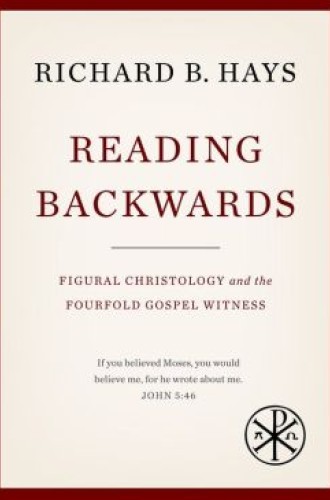Reading Backwards, by Richard B. Hays
I remember arguing a historical point with a visiting New Testament scholar while I was in graduate school at Duke. The question was whether the resurrection can be said to have happened historically. This guest speaker felt that on the grounds of what counts as history we cannot say yeah or nay. Richard Hays countered that the gospel should lead us to rethink our notions of history. The visitor shook his head and protested out of earshot, “Richard is really a literary guy.”
His reference was to Hays’s early landmark work, Echoes of Scripture in the Letters of Paul, which argued, contrary to convention, that Paul’s references to Israel’s scripture are not mere clumsy proof texts, but rather carefully considered figural readings. When Paul quoted a Psalm or a passage from Isaiah, he assumed that the reader would know its original narrative context and that the meaning would echo between that context and Paul’s words to his readers. Echoes is shot through with literary terms like intertextuality and metalepsis.
This may seem like scholarly intramurals, but the upshot is significant. If Paul can reread Israel’s scripture christologically, then why can’t we? Think of the constant refrain in introductions to historical criticism: that we have to read the scriptures in their “original” (that is, historically reconstructed) context. Hays’s work points out that Paul didn’t do so. He read them in light of Christ’s work of gathering a church of Jews and gentiles, here at the end of the age. Hays isn’t just trying to nudge the dial on Pauline scholarship. He wants us to rethink how we teach and study and preach the Bible.






